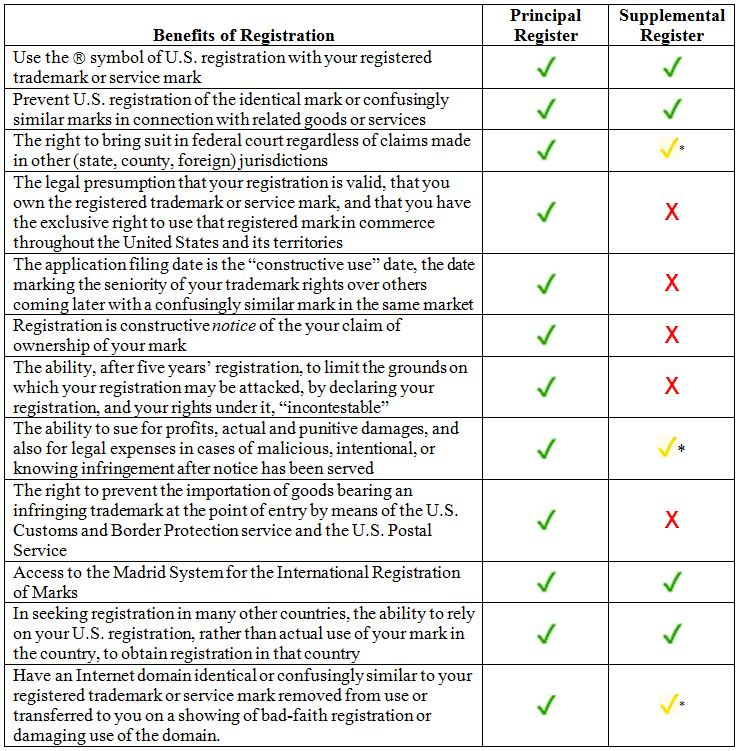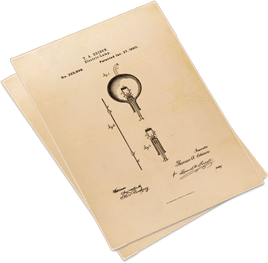Descriptive brand names are seductive, if for no other reason than the belief that the name itself helps in the marketing of the goods and services. So marks like “Gal Fashion” for women’s clothing stores and “Fitband” for an armband to hold fitness tracking devices prove hard to resist. But when it comes to registering those types of trademarks and service marks, descriptive marks almost always wind up on the U.S. Supplemental Register, as did the two marks mentioned above.
Although a registration on the U.S. Supplemental Register is still a U.S. federal registration and provides a subset of trademark rights (see the table below), the reasons we attempt to discourage the adoption of descriptive marks are manifold and extend beyond the Supplemental Registration’s incomplete set of benefits and protections. First and foremost, of course, is that registration on the Supplemental Register lacks all legal presumption that you have any rights in the registered trademark at all.
But perhaps the most important drawback of choosing a descriptive mark is that when a descriptive mark is your first choice for your new product or service, it or something very like it is often the first choice of others entering your market space. That often leads to either continually spending lots of time, energy, and resources trying to enforce your rights against a parade of newcomers, or not enforcing your rights and, as a result, losing whatever exclusive rights you might have had in the trademark and any claim to the mark having “acquired” distinctiveness.
Another important, but hidden weakness is that, even though registrations on the Supplemental Register can be used as the basis of obtaining registration in most foreign countries, the U.S. is the only nation that maintains anything like the Supplemental Register for descriptive marks. Some countries are more forgiving than the U.S. about what is and is not descriptive and may simply register a mark that is not blatantly descriptive. Most other countries, however, simply will not register a descriptive, non-distinctive mark at all or will only register the mark on evidence of its acquired distinctiveness in their county. In the global economy, this can be a serious drawback.
This table compares the benefits acquired from registration on the Principal Register with those provided by registration on the Supplemental Register:
* To prevail, you must first be able to prove on evidence that you have rights in the mark based on current and continuing use in interstate trade.



